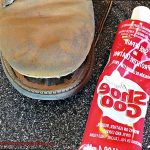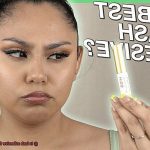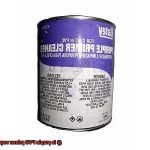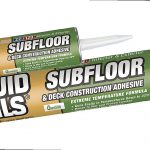Step right into our crafting wonderland, where we unravel the mysteries of adhesives and unleash your creative potential.
Prepare to have your mind blown as we embark on a quest to uncover the truth about school glue and Mod Podge. These two adhesive superstars may seem like peas in a pod, but are they really cut from the same cloth?
Whether you’re a crafting newbie or a seasoned DIY wizard, buckle up for an adventure as we unravel the captivating similarities and intriguing distinctions between school glue and Mod Podge.
What is School Glue?
Contents
School glue, also known as white glue or craft glue, is an adhesive that is widely used in classrooms, craft rooms, and various educational settings. It is made from a water-based formula, making it safe and easy to use, especially for children. The main ingredient in school glue is polyvinyl acetate (PVA), a synthetic polymer that becomes sticky when it comes into contact with moisture.
The versatility of school glue is one of its standout features. It can bond different materials together, including paper, cardboard, fabric, and other porous surfaces. This makes it perfect for a wide range of projects, whether it’s creating artwork, assembling school assignments, or crafting presentations.
When it comes to forms, school glue offers options to suit different needs. Liquid glue is the most common type, typically white and runny in consistency. It can be applied using a brush or spreader. Glue sticks are solid and can be twisted up or down to apply adhesive directly onto surfaces. Squeeze bottles with nozzle tips are also available for more precise application.
One of the advantages of using school glue is its quick drying time. This allows you to continue working on your project without significant delays. Additionally, it dries clear, ensuring that the adhesive remains invisible and doesn’t disrupt the overall appearance of your creation.
Another benefit of school glue is its safety. It is non-toxic and washable, making it perfect for children to use without any worries. If spills or accidents occur, simply clean up with water – no need to be concerned about harmful chemicals.
However, it’s important to note that school glue may not be suitable for all materials. It may not provide a strong enough bond on surfaces like glass or metal. In such cases, specialized glues or adhesives may be required.
What is Mod Podge?
Mod Podge is a crafting essential that has captured the hearts of crafters and artists around the world. It is no ordinary glue; it is a decoupage medium that can transform your DIY projects into works of art. Developed by Plaid Enterprises in the 1960s, Mod Podge has become a staple in the crafting community.
What makes Mod Podge unique is its formulation. It combines adhesive properties with a sealant and finish, making it a versatile three-in-one solution for all your crafting needs. The main ingredients of Mod Podge include water, polyvinyl acetate (PVA) or white glue, and a blend of resins and solvents. The specific formulation may vary depending on the type of Mod Podge you choose.
The versatility of Mod Podge is one of its greatest assets. It can be used on a variety of surfaces, including wood, plastic, glass, ceramic, fabric, and paper. This means you can let your creativity run wild and create personalized crafts for any occasion. Whether you want to decorate a wooden box, create a collage on canvas, or give new life to an old piece of furniture, Mod Podge has got you covered.
But Mod Podge isn’t just an adhesive; it also acts as a sealant and finish. When applied over your project, it creates a protective barrier that helps prevent damage from moisture and UV rays. This makes Mod Podge ideal for preserving delicate artwork or adding a durable finish to handmade gifts.
Applying Mod Podge is a breeze. You can use a brush or sponge applicator to spread it evenly on your surface. It dries clear, although some variations may have a slight milky appearance when wet. The drying time can vary depending on the thickness of the application and environmental conditions, but on average, it takes about 15-30 minutes for Mod Podge to dry to the touch, and it fully cures within 24 hours.
One of the best things about Mod Podge is that it’s water-based, which means you can easily clean up any mess with soap and water while it’s still wet. No need to worry about ruining your tools or making a mess. However, once Mod Podge has dried and cured, it becomes water-resistant and cannot be removed with just water.
Similarities Between School Glue and Mod Podge
In this blog post, we’ll delve into the remarkable similarities between two popular adhesives: school glue and Mod Podge. These versatile products have a lot in common, making them essential tools for any DIY project.
First and foremost, both school glue and Mod Podge share the distinction of being water-based adhesives. This means that they are not only safe to use but also easy to clean up and non-toxic. Whether you’re working on a project with children or in an educational setting, you can rest easy knowing that these adhesives won’t harm anyone.
Another remarkable similarity lies in their transparent drying property. Both school glue and Mod Podge dry clear, allowing your projects to truly shine without any interference from the adhesive. This is particularly crucial when working on paper crafts, collages, or decoupage projects where the adhesive is visible.
The consistency of school glue and Mod Podge is equally comparable. Both possess a thick and viscous nature, making them incredibly easy to apply and control. Whether you’re spreading glue evenly on a surface or applying Mod Podge to seal a project, you’ll appreciate the precise application that these adhesives offer.
Furthermore, both school glue and Mod Podge exhibit the impressive ability to function as sealants. While their primary function is bonding materials together, they can also act as protective barriers against moisture, dust, and other elements. By applying layers of school glue or Mod Podge, you can ensure the longevity of your creations.
Versatility is yet another shared characteristic of these adhesives. From paper to fabric, wood to plastic, school glue and Mod Podge can be used on a wide range of materials. Their flexibility opens up endless possibilities for your imaginative endeavors.
Lastly, both school glue and Mod Podge are readily available and affordable. Craft stores, online retailers, and even local supermarkets’ school supply sections stock these adhesives. Their accessibility and affordability have contributed to their popularity among professional artists and hobbyists alike.
Differences Between School Glue and Mod Podge
Get ready to embark on a captivating journey into the enchanting world of glue. Today, we will unravel the mesmerizing differences between two popular adhesives – school glue and Mod Podge.
Though they may appear similar at first glance, these magical substances possess unique properties that set them apart. So, prepare yourself for this adhesive adventure as we determine which glue is best suited for your creative endeavors.
Composition and Purpose:
Crafted from polyvinyl acetate (PVA) and water, school glue, also known as white glue or craft glue, is ideal for arts and crafts projects, paper bonding, and fabric adhesion. On the other hand, Mod Podge is a versatile adhesive that serves as an all-in-one sealer, glue, and finish.
Its composition includes PVA, water, and additional additives that provide durability and protection. Mod Podge is tailor-made for decoupage, collage, and various crafting projects.
Consistency and Drying Time:
With its thin consistency, school glue spreads evenly across surfaces with ease. In contrast, Mod Podge boasts a thicker texture that enables it to adhere to heavier materials like fabrics or dimensional objects.
When it comes to drying time, school glue typically dries within 30 minutes to an hour. However, due to its thicker composition, Mod Podge may require several hours or even overnight to dry completely.
Finish and Waterproofing Capabilities:
School glue dries clear with a subtle sheen once it has dried. In contrast, Mod Podge offers a range of finishes to suit your preferences – from matte for a non-shiny look to gloss for a lustrous finish or satin for a soft sheen.

Furthermore, while school glue is not inherently waterproof and can lose its adhesive properties when exposed to moisture, certain Mod Podge formulas like the outdoor or dishwasher-safe options provide a durable and water-resistant finish, making them perfect for moisture-prone projects.
Suitability and Availability:
Widely available and relatively inexpensive, school glue is a popular choice for educational settings and basic crafts. On the other hand, Mod Podge, as a branded product, may come with a higher price tag. However, it is favored by experienced crafters and artists who appreciate its versatility, durability, and the variety of finishes it offers. Mod Podge is particularly well-suited for intricate and professional-looking projects that demand a robust adhesive.
Consistency
Join us as we delve into the fascinating world of consistency and unlock the secrets behind these glues’ unique properties, applications, and transformative effects. So grab your crafting supplies and prepare for a mind-blowing journey through the enchanting realm of glue.
Consistency: Thin vs. Thick
The first noticeable distinction between school glue and Mod Podge lies in their consistency. School glue, with its thin and liquid milk-like texture, effortlessly spreads across various surfaces like paper, cardboard, fabric, and wood. It is the perfect choice for lightweight bonding in arts and crafts projects.
In contrast, Mod Podge boasts a slightly thicker consistency compared to school glue. This thickness grants it superior adhesion and sealing properties, making it an ideal companion for more robust creations such as decoupage and collage. With different formulations available – matte, gloss, satin, and more – Mod Podge offers endless possibilities for achieving the desired finish.
Applications: Unleashing Creativity
School glue truly shines in the realm of arts and crafts. Its thin consistency allows for precise application when gluing together paper shapes or creating captivating collages. It is also fantastic for attaching googly eyes to homemade puppets or affixing feathers onto masks. Versatile and reliable, school glue has become a staple in classrooms and households worldwide.
Mod Podge takes creativity to new heights. Thanks to its thicker consistency, it easily seals artwork, providing unparalleled durability and protection against wear and tear. Whether you’re decoupaging a wooden box or transforming an old table with stunning collage art, Mod Podge is your go-to adhesive for achieving a professional-looking finish that will leave everyone in awe.
Effects: Unleashing the Magic
While school glue gets the job done for basic bonding, Mod Podge infuses your crafts with a touch of magic. Its sealing properties create a protective layer that enhances the visual appeal while safeguarding your artwork against moisture and fading. With a wide range of finishes available, Mod Podge empowers you to unleash your creativity and choose the perfect effect for your masterpiece.
Conclusion:
In the battle of consistency, school glue and Mod Podge each possess their own unique qualities. School glue’s thin consistency excels in arts and crafts, providing easy application and bonding for lightweight materials. On the other hand, Mod Podge’s slightly thicker consistency offers superior adhesion and sealing properties, making it the perfect companion for decoupage and collage projects.
Drying Time
Drying time is a critical aspect to consider when it comes to glues. Whether you’re embarking on an art project or a crafty DIY endeavor, understanding how long it takes for your adhesive to set is essential. Today, we’ll delve into the world of drying time and explore the differences between school glue and Mod Podge, two popular adhesives with their unique characteristics.
Let’s begin with school glue, a familiar presence in both classrooms and households. Known for its versatility, school glue typically boasts a faster drying time compared to Mod Podge. Within a span of 20-30 minutes, depending on the thickness of the application and surrounding conditions, school glue can solidify. This makes it an ideal choice for those quick projects or instances when time is of the essence.
In contrast, Mod Podge requires a bit more patience. Due to its denser consistency and the additional ingredients that contribute to its distinct properties, this adhesive takes anywhere from 1-2 hours, and sometimes even longer, to dry. However, it’s this lengthier drying time that allows Mod Podge to achieve one of its standout features—a durable, glossy finish. If you desire that professional-looking shine for your project, it’s worth embracing the wait.
It’s worth noting that the drying time can also vary depending on the specific type of Mod Podge being used. With formulations available in matte, gloss, and satin finishes, each variation possesses its own unique drying characteristics. To ensure optimal results, be sure to consult the label for precise instructions.
Regardless of whether you opt for school glue or Mod Podge, allowing ample drying time before handling or moving your project is crucial. By doing so, you ensure proper adhesion while preventing unfortunate smudging or smearing accidents. If you find yourself pressed for time, employing a heat source like a hairdryer can expedite the drying process for both adhesives. However, exercise caution to avoid overheating or inadvertently damaging your masterpiece.
Finishes Offered by Mod Podge
Whether you prefer a subtle matte, a shiny gloss, a sparkling glitter, or a vintage antique look, Mod Podge has got you covered. Let’s dive into the world of Mod Podge finishes and explore their unique properties and uses.
First up, we have the classic matte finish. Perfect for those who want a more understated look, this finish provides a non-shiny, subtle touch of elegance to your creations. It works wonders for decoupage, collages, and other paper-based crafts.
If you’re looking to add some pizzazz and make your projects stand out, the glossy finish is for you. With its shiny, reflective surface, this finish screams professionalism. Ideal for surfaces like wood, glass, and ceramics, it adds a polished look that demands attention.
But why stop at shiny when you can go full-on sparkle? Enter the glitter finish. This magical formula contains tiny glitter particles that create a dazzling effect when applied to surfaces. Perfect for adding some glam to jewelry boxes, picture frames, and holiday decorations, get ready to unleash your inner glitter queen.
For those who love the vintage aesthetic, Mod Podge offers an antique matte finish. This weathered, aged appearance adds a touch of nostalgia to your projects. Transform furniture, home decor pieces, and mixed media artworks into vintage treasures with this unique finish.
But wait, there’s more. Mod Podge also offers specialty finishes like outdoor, dishwasher-safe, and fabric formulas. The outdoor formula withstands the elements and provides long-lasting protection for your outdoor crafts. The dishwasher-safe formula allows you to create items like mugs and plates that can be safely washed in the dishwasher. And the fabric formula adheres fabric to surfaces, opening up a whole new world of fabric-based projects.
Adhesive Properties
Adhesive properties refer to the characteristics and abilities of an adhesive substance to bind materials together. Adhesives play a crucial role in various industries, including construction, manufacturing, and crafts. Understanding the adhesive properties of different products can help you choose the right adhesive for your specific project.
One key property of adhesives is their holding power or bond strength. Different adhesives have varying levels of bond strength, which determine how well they can withstand stress and resist separation. Some adhesives are designed for lightweight materials like paper and fabric, while others are formulated for stronger bonds on heavier materials like wood or metal.
Another important property is the drying time of adhesives. Drying time refers to how long it takes for an adhesive to fully cure or set. This can vary depending on the type of adhesive and the environmental conditions. Some adhesives dry quickly within minutes, while others may require hours or even days to reach full strength.
The flexibility of an adhesive is also a significant property to consider. Flexible adhesives can withstand movement and changes in temperature without losing their bond. This is crucial in applications where materials may expand, contract, or experience vibrations.
The viscosity of an adhesive refers to its thickness or flowability. Low viscosity adhesives are thin and flow easily, making them suitable for bonding porous materials or filling gaps. High viscosity adhesives, on the other hand, are thicker and more suitable for bonding non-porous materials.
Adhesive properties also include factors such as resistance to water, chemicals, heat, and UV radiation. These properties determine how well an adhesive can withstand exposure to different environments and retain its bond strength over time.
AJ0k6Ngcu6s” >
Conclusion
When it comes to the question of whether school glue is the same as Mod Podge, the answer is a resounding no.
While both products are adhesive and can be used for crafting purposes, they have distinct differences that set them apart. School glue is typically made from polyvinyl acetate (PVA), which gives it a strong bond but limited versatility.
On the other hand, Mod Podge is a specialized crafting glue that offers not only adhesive properties but also acts as a sealant and finisher. Its unique formula allows for various applications such as decoupage, collage, and even fabric projects.
So, while school glue may work in certain situations, if you’re looking for a versatile and professional-grade adhesive with added benefits, Mod Podge is the way to go.






